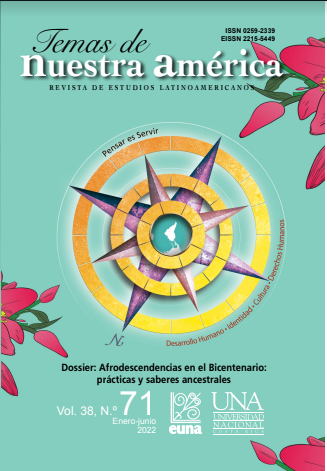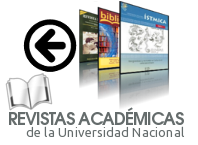The Nicaraguan Caribbean Coast: Melting pot and amalgam
DOI:
https://doi.org/10.15359/tdna.38-71.10Keywords:
Ethnic identity, genealogy, utopia, autonomy, diversity, poetryAbstract
Through this essay, I intend to share a brief reflection from my personal experience through poetry, on how literary creation and the multiculturalism of the land where I was born, have an impact on me, sailing among seas of diverse tonalities but that in the end, have shown me that they emerge from the same ancestral source beyond the skin, language, customs, religions and the territories we inhabit. There are more common elements that as human beings guide us towards shared utopias. As a woman writer, I interpret the world in which we live and coexist, naming things, evidencing them, and spreading them in order to influence the transformations we seek. For this essay I base my work mainly on personal experiences, in addition to research carried out in documentary sources related to the subject and information gathered from interviews with my paternal grandfather and my father, both now deceased. They were of vital importance to mark the route to follow in this process, which decodes the intricacies of my genealogy; a curiosity that deepened when I began my master's studies in social anthropology in 2004, when I concluded that I am a melting pot and an amalgam.
References
Hooks, Bell.(2004). “Viviendo de Amor”, pp. 1-8.http://www.concienciasinfronteras.com/páginas/conciencia/deamor.html
Krotz Esteban. (2000). Boletín Antropológico N.° 49, mayo-agosto, Centro de Investigaciones Etnológicas -Museo Arqueológico- Universidad de los Andes-Mérida.
Lagarde, Marcela. (2003). “De la igualdad formal a la diversidad. Una perspectiva étnica latinoamericana”, 2003, pp. 72, 73.
____________________(2021). Conferencia El buen vivir de las mujeres desde el feminismo, octubre 2021, en inauguración del diplomado “El buen vivir de las mujeres desde los feminismos decoloniales y la cosmovisión maya” de la Fundación Guatemala, Ciudad Guatemala.
Mastretta, Ángeles. (1998). “El mundo iluminado”. Editorial Planeta Colombiana S. A., Bogotá, Colombia. Pp. 219-220.
Rossman Tejada, Y. (2006). La Autonomía Multicultural desde la Poesía de Escritoras costeñas. Tesis de Maestría en Antropología Social con mención en Desarrollo Humano. Nicaragua. Universidad de las Regiones Autónomas de la Costa Caribe Nicaragüense-URACCAN.
Taylor Nidya. (2004). “Participación activa. Las Mujeres y el Proceso Autonómico”, Memoria del IV Simposio Internacional de Autonomía, Managua, Nicaragua. Septiembre, 2004, pp. 1-7.
Tuttolomondo, Trinidad. (2002). “Pasado y Presente en la Esclavitud Africana”, Observatorio de Conflictos, Universidad de Rosario, Argentina, p. 5.
Von Houwald titulado Goetz, “Los Alemanes en Nicaragua”, Cáp. IV, p. 307. http://www.enriquebolanos.org/data/media/file/CCBA_-_SERIE_HISTORICA_-_02_-_Los_Alemanes_en_Nicaragua_2_de_3. CapIV, pag. 307.pdf
Published
How to Cite
Issue
Section
License
Esta obra de Revista Temas de Nuestra América está bajo una Licencia Creative Commons Atribución-NoComercial-SinDerivar 4.0 Internacional.
Cualquier permiso que trascienda dicha licencia, debe solicitarse por escrito a la persona directora de la Revista









